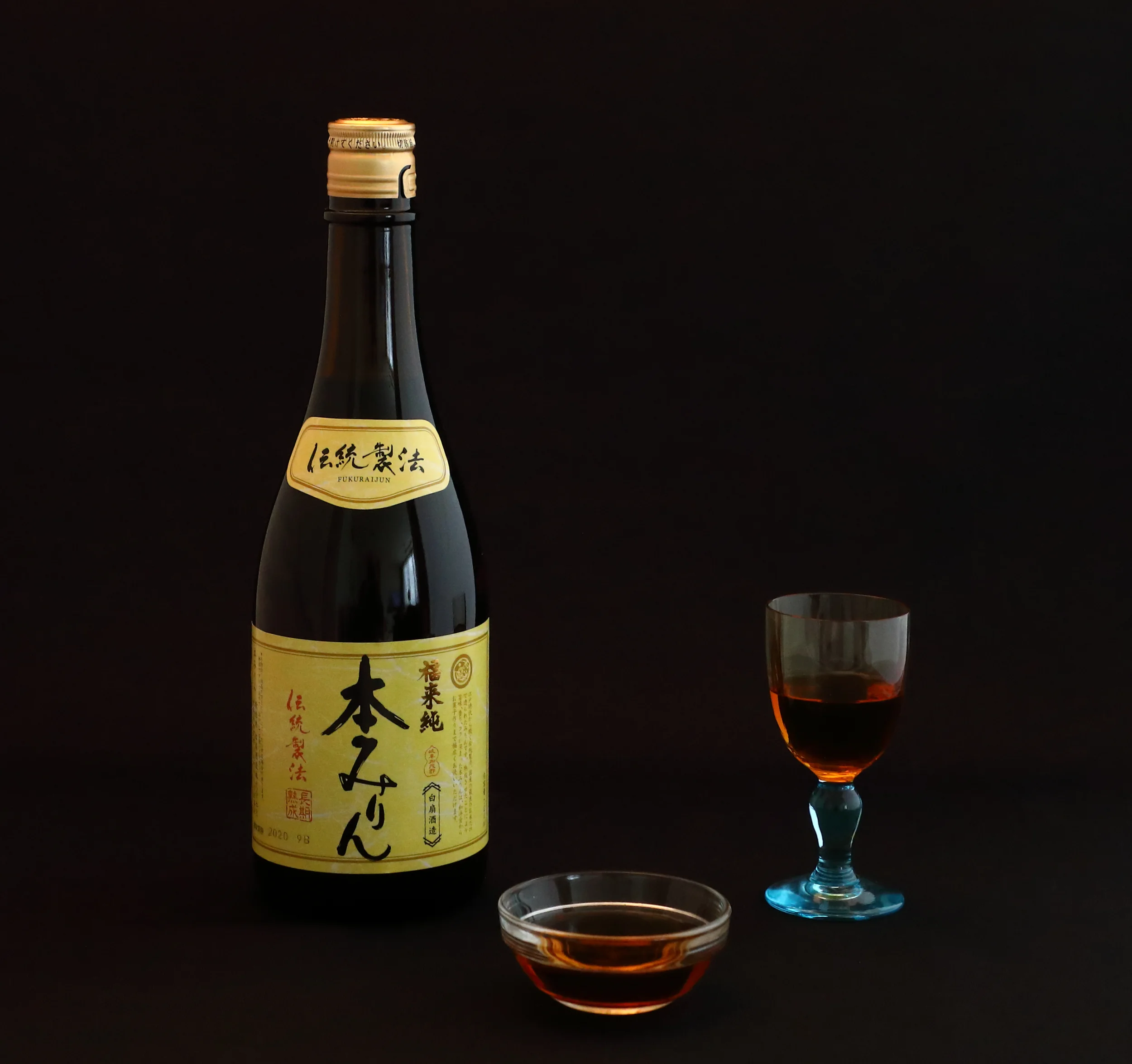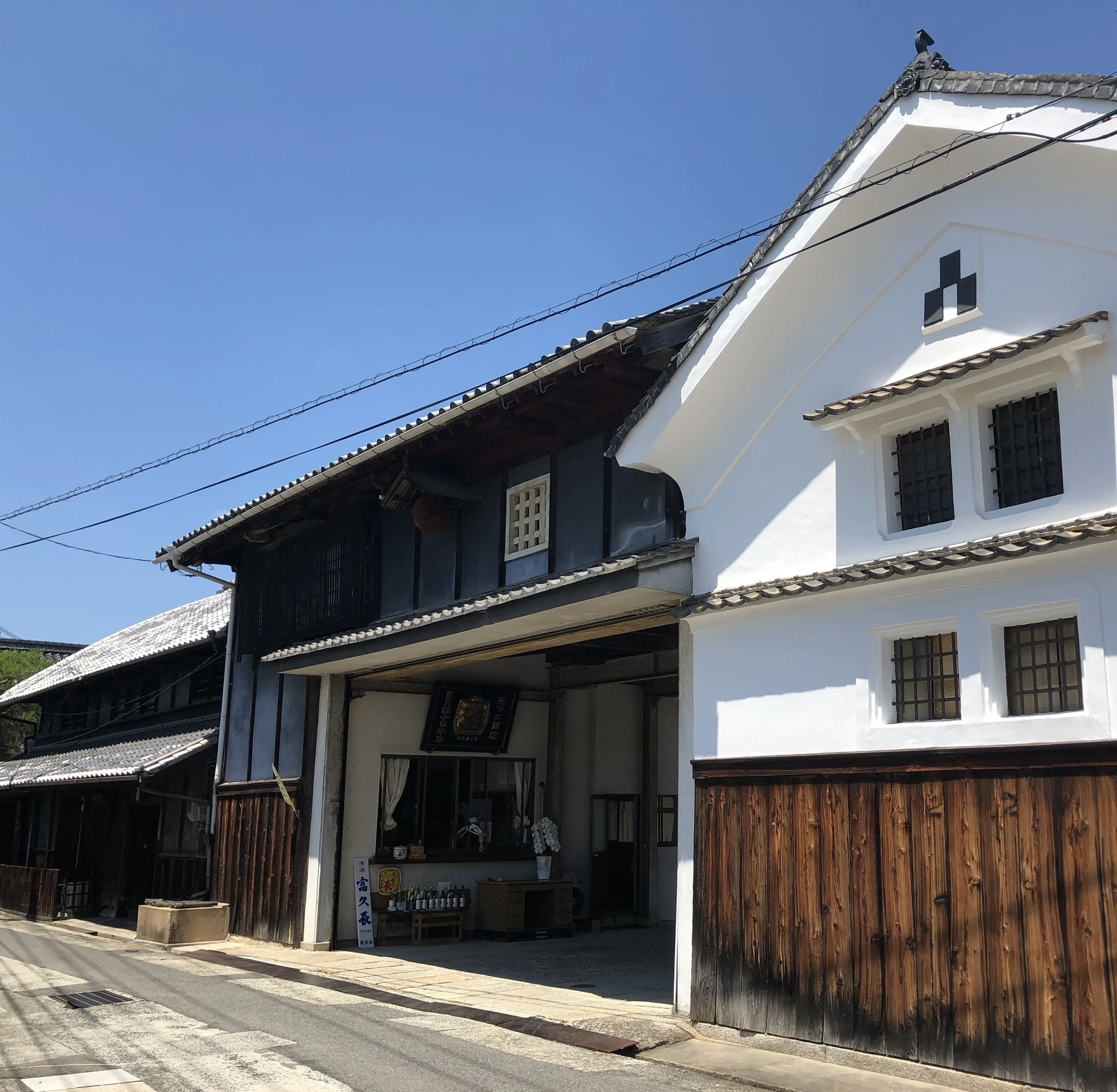Sakiyama Shuzo Sho's "Ryukyu Awamori Matsufuji"
“Matsufuji” is a uniquely ethereally rich, flavorful, refined style of awamori liquor made by the Sakiyama family according to the traditional brewing practices of the Ryukyu kingdom that once ruled the Okinawan Islands as an independent nation.
A fundamental test of the uniqueness of a cuisine should be whether or not it includes its own distinct liquor given the importance of alcohol to both cooking and eating. If you buy into this assumption, then Okinawan cuisine is truly unique and not an amalgam of all the influences that it has been exposed to and absorbed over the centuries as is often portrayed. The Okinawan Islands have awamori, a liquor unlike that found anywhere else in terms of its flavor, production, and consumption. Awamori is made with fragrant long-grain Thai rice that is inoculated with a black koji mold (Aspergillus awamori) indigenous to Okinawa and then fermented, and also distilled, and consumed either fresh when its flavor is exotic, complex, and robust (as pictured in the title block) or after it has been aged from three years to anywhere between 100 to 200 years when its flavor is also exotic, more complex, and milder.
Awamori has been part of the Okinawan Island food culture for over six-hundred years, and originally was a drink for the Ryukyuan royal family, who ruled the islands until they were annexed by Japan in 1872. It continues to be the most popular alcoholic beverage on the islands and is consumed in a myriad of ways. It is also used pervasively in cooking as a cooking agent and seasoning. In recent years, to distinguish awamori, the appellation “Ryukyu Awamori” has been added to awamori made by brewers who apply the best traditional practices, like the “Matsufuji” brand brewed by Sakiyama Shuzo Sho.
Sakiyama Shuzo Sho has been making awamori on the main island of Okinawa since 1905. The small, family-owned brewery was started by Oto Sakiyama, a woman. This, itself, is a testament to awamori’s cultural uniqueness as it reflects the matriarchal orientation of traditional Okinawan society. When Oto married, her husband brought with him into the marriage a liquor store, which she convinced him to sell in order to buy a small sake brewery that she converted to making awamori. A formidable woman, not only did she run the family business, but she nursed her husband through a long illness until his death at an early age and raised their three children by herself. One of these, Kimatsu, took over the family business, when Oto passed away in 1935. Together with his wife Fujiko, they ran the business and created one of the first branded awamori in Okinawa. Prior to that, awamori was simply sold unlabeled by weight. They named their awamori “Matsufuji,” combining their two first names in another show of the respected role and appreciation of women in Okinawa. Today, Sakiyama Shuzho Sho is run by the fourth generation of the family, Tomohiro Sakiyama. He is helped by his daughter Junko.
The Sakiyama brewery is located in what was an abandoned U.S. army building in an area called Kin Town just north of the city of Naha on the east side of the island. It moved there after World War II because its former location, like much else on the island, was destroyed. Over the years, the Sakiyamas have been able to replace much of their lost equipment, including the large clay jars in which awamori is aged, and apply their century-old know-how to making a rich, flavorful yet refined type of awamori.
At Sakiyama, rice is first washed and soaked in water, steamed, and cooled, then inoculated with black koji mold and allowed to rest for a day. This mold is key in making awamori because it generates a high amount of citric acid when producing alcohol, which acts as a strong preservative during the brewing process and prevents bacterial decay in the warm, humid climate of Okinawa. The black koji mold also gives awamori its strong flavor. The next day the rice, called koji rice at this stage, is tossed and mixed by hand and left to germinate for three days on shelves in traditional triangular-shaped wooden huts. More commercial awamori brewers only germinate the rice for two days. Three days enhances the richness and complexity of “Matsufuji.” The koji rice is then mixed with more steamed rice, water, and yeast and fermented for about thirty days. The water used is as important as the koji mold, and the Sakiyamas use spring water from Mt. Onna behind the brewery. It is soft water which means the mash must be fermented more slowly and for a longer period of time and is why “Matsufuji” is fermented for a month instead of the standard two weeks used by commercial brewers. Longer fermentation further adds to the richness of “Matsufuji” by helping to bring out the sweetness of the rice. Two types of yeast are used during fermentation: yeast made from already-brewed awamori and yeast made from Okinawa’s kokuto black sugar, which provides additional balancing and savory sweetness. After fermentation, the mash is transferred to a pot still and distilled as lightly as possible to retain as much of the aroma and flavor of the spirit as possible. It is heated until steam is formed that is 65% alcohol. The steam is then cooled down until it has an alcohol content of around 45-50%.
As is traditional for awamori brewers, “Matsufuji” comes in a wide range of awamori based on its basic type of brew. They vary by alcohol content—50%, 44% 30%, and 25% proof—with fresh water added to dilute the awamori. They also vary by whether the awamori is freshly brewed or has been aged for three to five years, (when it is called “kusu,” or “old liquor”) and whether it is a blending of freshly brewed and aged awamori. All types of “Matsufuji” are enjoyable, especially to new initiates to awamori because they are more refined, well-balanced, and milder than many other types of awamori while retaining an exotic aroma and complex flavor.
The traditional Okinawan way of enjoying awamori is to have a glass of it straight with a bucket of ice and pitcher of water on the side. It is also served warm with water and mixed into cocktails. It really is whatever way you like it: with a twist of citrus, with soda water or fruit juice, mixed into coffee or milk. As a result of the distillation, awamori is sugar-free and has fewer calories than comparable spirits. It is another example of the way traditional Okinawan foods are both enjoyable and healthy.
Although awamori is often said to go best with rich seafoods and fatty meats, fried foods, and cheese, “Matsufuji” pairs well with many foods because of its more refined qualities. This also makes it better for cooking non-Okinawan dishes. Awamori’s alcoholic strength makes it good for marinades and long braises of rich, fatty foods and its exotic, fragrant flavor makes it an interesting addition to soups, stews, and stir-fries. Awamori as a seasoning is characteristic of Okinawa’s other seasonings— mineral-laden sea salts, strong-tasting katsuo (bonito) dashi stock, and kokuto black cane sugar—in that its flavorful complexity helps to underpin and not obscure the natural flavors of the main ingredients, while also adding a subtle flavor of its own. Koregusui, which is Okinawa’s piquant, fragrant vinegar, is made from awamori infused with mugwort leaves and the islands’ unique pipatsu peppers. In one or more of its many forms, visitors to Okinawa will likely have the pleasure of experiencing awamori.
Story & Photos: Tom Schiller
Sakiyama Shuzo Sho 崎山酒造廠
751 Aza-Igei, Kin Town, Okinawa 904-1202
Tel: +81 (098) 968 2417
Web: sakiyamashuzo.jp
Sakiyama Shuzo Sho is open 9:00 to 17:00 every day except for major national holidays. The Sakiyama family is happy to give you a tour of the brewery whenever you arrive, although it is best to call ahead and let them know you are coming. At the shop at the brewery you can taste the many different types of “Matsufuji” to help you decide which one or more is best for you. You can also buy limited editions there, such as the strongest 50% proof “Matsufuji.”




